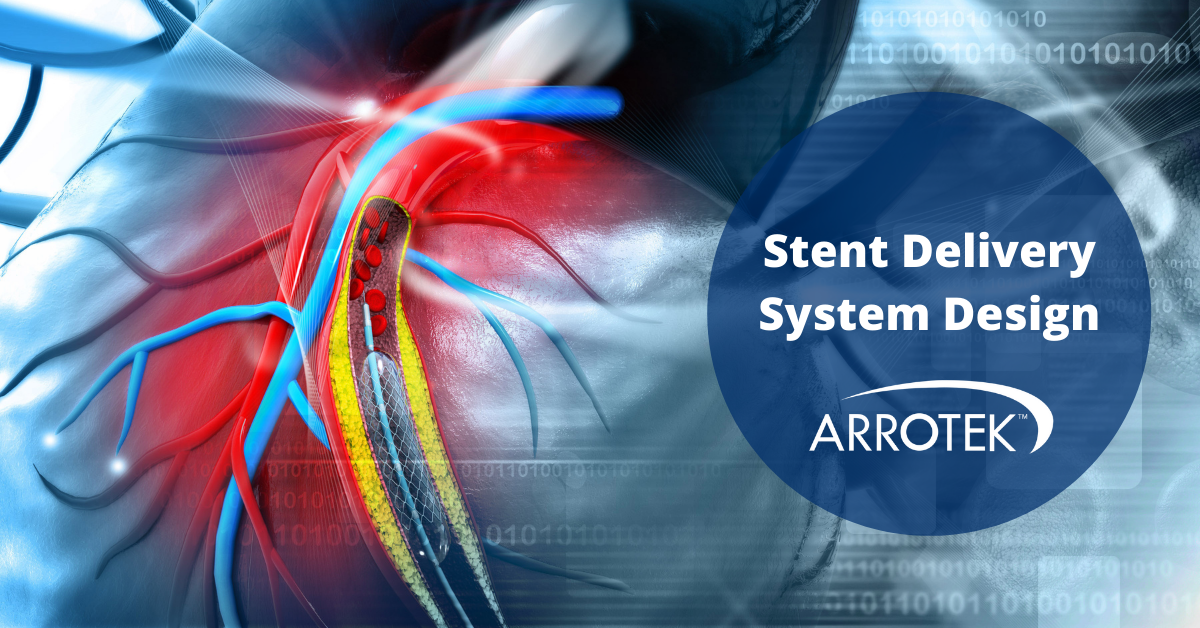Stent delivery systems, particularly those that involve balloon catheters, have been used in a range of different medical procedures for many years. This doesn’t mean innovation in this area of medical device design has stopped. Quite the opposite, in fact, as new and highly innovative solutions continue to be developed.
This includes stent delivery systems capable of delivering stents to the body’s most difficult-to-reach locations, including the brain. New innovations are also improving the performance of stent delivery systems in existing applications, while new technologies like robotics continue to push boundaries.
When going through a stent delivery system design process, there are multiple considerations that medical device design engineers need to consider. The information below is a quick introduction.
The Starting Point
In general, the objective of a stent delivery system design process will be to develop a device that delivers optimal levels of performance while enhancing the confidence of medical professionals.
The latter point is important as developing an innovative, yet commercially successful, stent delivery system isn’t just about pushing the boundaries of technology. Physicians must also believe in the technology, and they need to have confidence in using your device.
It is also important to consider the applications the new device is being designed for. This will direct many of the design decisions that are taken during the process.
For example, stent delivery systems designed for neurovascular applications require ultra-low-profile catheters. To put this into perspective, a stent delivery system designed for peripheral vascular applications could have a catheter as big as 8 Fr. As vessels in the brain are considerably smaller and more tortuous to navigate, catheters that are as small as 2 Fr are required.
Designing the Stent
Examples of the main considerations that should be taken into account when designing the stent include:
- Excellent apposition – optimising the apposition of the stent will ensure it stays in full contact with the vessel wall without any separation
- Strength – the stent should be optimised for strength, including radial and axial strength
- Highly visible – to improve usability for the physician during the procedure, the stent should use materials and have a design that maximises visibility
- Flexibility – optimised flexibility is an important performance characteristic in the design of stents. High levels of flexibility also improve the ability of the stent to maintain the natural curvature of the vessel and minimise the potential of the vessel straightening.
- Fracture resistant – maximum fracture resistance is important as stent fractures significantly increase rates of Major Adverse Cardiac Events
In addition to the above, your medical device design partner will also consider things like the material used to manufacture the stent as well as the stent’s pattern and design.
Drug-Eluting Stent
One of the most common types of stents used today, particularly for cardiovascular applications, is the drug-eluting stent. This type of stent features a coating of medication that releases slowly over time to prevent the formation of blood clots inside the stent.
Designing the Catheter
As the catheter is the delivery device element of the system, it is also of crucial importance. In particular, the catheter should be optimised for pushability, trackability, and flexibility to ensure physicians can position the stent in the right location.
While pushability, trackability, flexibility, and tensile strength are typically the most important performance characteristics, there is a range of other considerations that apply in catheter design for stent delivery systems. Some of the most important include:
- The catheter typically has a lubricous inner diameter, often using PTFE, to minimise stent deployment force/friction
- The design of braid and/or coil reinforcement is essential to the performance of the device. This can include variation in braid density and coil pitch along the length of the catheter.
- A combination of polymer jackets may be used along the length of the catheter to deliver the performance characteristics required for the device
- Hydrophilic coating can be used on the outer diameter of the catheter to minimise friction with the patient and reduce patent trauma. This also permits easier insertion and retraction of the device for the clinician.
- Radiopaque markers are usually required along the shaft of the catheter to assist the clinician in successfully completing the procedure under fluoroscopy
- For balloon expandable stents, a compliant balloon will be required that is designed to minimise the potential of balloon growth during the procedure
- A combination of catheters and handle is usually required to produce the functional requirements of the delivery system
Speak to an Engineer
With all the points above (and all other considerations that apply in the development of stent delivery systems), compromise is part of the process. In other words, optimising one performance characteristic could have a negative impact on another.
Therefore, it is essential you work with a catheter design team that has experience developing new and innovative stent delivery systems, including stent delivery balloon catheters.
To speak to one of our engineers, please complete the form below and we will get back to you.





